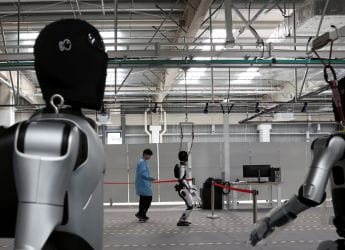- Home
- Science
- Science News
- X Ray Nebula Discovery Brings Astronomers Closer to Solving Cosmic Ray Mystery
X-Ray Nebula Discovery Brings Astronomers Closer to Solving Cosmic Ray Mystery
Astronomers link an X-ray nebula to a pulsar-powered PeVatron, offering major clues to the origins of galactic cosmic rays.

Photo Credit: XMM-Newton
X-ray image of the newly discovered pulsar wind nebular associated with an extreme Galactic cosmic ray
Galactic cosmic rays refer to high-energy particles that were discovered in 1912, although their origin has remained a mystery. The fact that China detected an X-ray nebula behind a source with its LHAASO observatory has led to new MSU observations of the X-ray nebula, which has been energised by a pulsar. This implies that the object is a rare PeVatron, which is a powerful cosmic accelerator capable of throwing the particles to massive energies. This finding brings astronomers a step closer to the solution to the hundred-year-old puzzle of cosmic rays.
Pinpointing a cosmic accelerator
According to the recent study published in The Astrophysical Journal, using XMM-Newton X-ray data, the team linked an unexplained LHAASO detection to a pulsar wind nebula – an expanding bubble of high-energy particles launched by a spinning neutron star. This confirms the object as a rare “PeVatron”, a powerful natural cosmic accelerator. It adds to LHAASO's earlier discovery of about a dozen such extreme accelerators.
The broader hunt continues
Beyond X-rays, astronomers are using ‘multi-messenger' probes. Last year, the IceCube neutrino observatory in Antarctica tracked a high-energy cosmic neutrino back to a distant blazar – the first time a cosmic accelerator outside our galaxy was pinpointed this way. Closer to home, IceCube has surveyed LHAASO's dozen ultra-high-energy sources for neutrinos, finding none and setting limits on these Galactic accelerators.
Future studies will combine neutrino detections with X-ray and gamma-ray observations, as Zhang's team plans, to finally solve the cosmic ray puzzle. For instance, a planned IceCube-Gen2 upgrade would dramatically increase sensitivity to such galactic neutrinos.
Get your daily dose of tech news, reviews, and insights, in under 80 characters on Gadgets 360 Turbo. Connect with fellow tech lovers on our Forum. Follow us on X, Facebook, WhatsApp, Threads and Google News for instant updates. Catch all the action on our YouTube channel.
Related Stories
- Samsung Galaxy Unpacked 2025
- ChatGPT
- Redmi Note 14 Pro+
- iPhone 16
- Apple Vision Pro
- Oneplus 12
- OnePlus Nord CE 3 Lite 5G
- iPhone 13
- Xiaomi 14 Pro
- Oppo Find N3
- Tecno Spark Go (2023)
- Realme V30
- Best Phones Under 25000
- Samsung Galaxy S24 Series
- Cryptocurrency
- iQoo 12
- Samsung Galaxy S24 Ultra
- Giottus
- Samsung Galaxy Z Flip 5
- Apple 'Scary Fast'
- Housefull 5
- GoPro Hero 12 Black Review
- Invincible Season 2
- JioGlass
- HD Ready TV
- Laptop Under 50000
- Smartwatch Under 10000
- Latest Mobile Phones
- Compare Phones
- Poco F8 Ultra
- Poco F8 Pro
- Huawei Mate 80 RS Master Edition
- Huawei Mate 80 Pro Max
- Huawei Mate 80 Pro
- Huawei Mate 80
- Huawei Mate X7
- Honor 500
- Asus ProArt P16
- MacBook Pro 14-inch (M5, 2025)
- Poco Pad M1
- Poco Pad X1
- Honor Watch X5
- Huawei Watch Ultimate 2
- Acerpure Nitro Z Series 100-inch QLED TV
- Samsung 43 Inch LED Ultra HD (4K) Smart TV (UA43UE81AFULXL)
- Asus ROG Ally
- Nintendo Switch Lite
- Haier 1.6 Ton 5 Star Inverter Split AC (HSU19G-MZAID5BN-INV)
- Haier 1.6 Ton 5 Star Inverter Split AC (HSU19G-MZAIM5BN-INV)

















